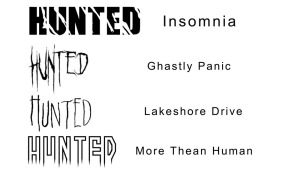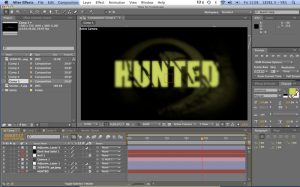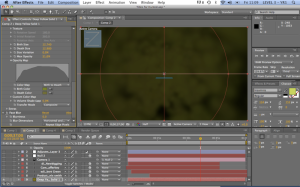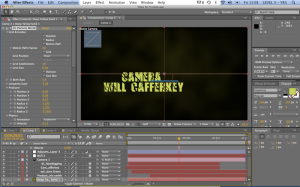Africa – Episode 2
BBC One – 12 January 2013
Opening Sequence
The programme begins with a shot of the earth from space, specifically Africa. This is accompanied by the programs theme music. The music is made to evoke Africa, with drums and percussions but can also become more orchestral in places with strings and choirs. These orchestral moments are to emphasis the grand scale and epic moments whilst the more African influenced parts are to place us geographically and fit the images. These two styles of music are often used together.
In the programme most sound effects are diegetic, paw steps, growls, yawns, etc. The only to none-diegetic sound layers are the music and the narration by David Attenborough
During the opening montage sequence everything thing and every setting has a sound effect, even if it’s only on screen for a few seconds. For example a shot of a monkey yawning in the montage has the background atmosphere of the jungle and the sound of the monkey yawning despite only last a moment.
Attenborough introduces the episode with a rare bit of diegetic narration; Him sitting in the helicopter, talking to use over the radio along with all the static is more like dialogue than narration.This puts us in the scene as this is how he would sound if we were talking to him in the helicopter. It also gives the sense that Attenborough isn’t just an inactive narrator; he travels and goes to sites in Africa.
Lizard Sequence
The first time we see the lizard it’s leaping through the air in slow motion, jumping from one rock to another. As the creature appears the music cuts to silence with dramatic sting.We can hear each scratch of the lizard’s claws on the rock, in slow motion the impact sounds louder and has greater impact.
The buzzing sound of the flying insect gets louder the closer they get to the lizard, rather than how close they are to the camera. This puts the viewer into the lizard point of view rather than being the viewer.
Creeping music comes in, little tinkering quirky music, the style of this music is often used in film and TV when a character is sneaking or coming up with a plan; exactly what the lizards are doing. It goes well with the scuttling sound effect as they run.
Shots of the lion in slow motion, the beating sound of it swatting its face is in slow motion. However the multiple buzzing sounds of the flies around it are in normal speed. By not distorting the fly sound effect by slowing it down they’re making it clear and prominent. This helps show that the flies are the lizard’s goal and again, gives us the lizard’s perspective.As a drop of saliva runs of the lions tooth it’s accompanied by a dripping sound. This suggests the lions hungry and could take apart the lizard. In fact there is a general emphasis on the sounds of the lion’s mouth, low growling, yawning.
The music, still stereotypical creeping music starts to become more dangerous and threatening the bolder the lizard gets and the closer he gets to the lion. In addition to the musical change in tone the danger is highlighted by more low rumbles from the lion. However the light hearted and almost cartoony nature of the music, even when it’s dangerous, assures us that the sequence is supposed to be quirky and so won’t end badly with the lizard killed by the lion.
Fire Sequence
“Dry sound” over a shot of the sun. That very high buzz that sounds almost like an insect swarm at double speed is often used to show the scorching sun in a desert landscape. Cracking crust sounds as the land dry’s.
Creepy foreboding music plays. As the sun pans across the screen it has a whooshing sounds that makes it seem fast and violent.
As the sun flares up, filling the frame, it’s given a searing, roaring sound. It really makes the sun seem violent, as if it’s exploding. This acts as a transition to a new atmosphere of sounds, burning and explosions and the crackling of fire in a stark baron land. There are many layers of burning effects, bombarding the viewer and putting them into the chaos of the land. The music also becomes more intense and dramatic, with a faster pace and female vocals belting out. There is sadness to the score but the intensity puts the view in the perspective of an animal in the fire rather than an observer. To and observer it would be sad, but to the creature experiencing it it’s scary. The score conveys both of these whilst the fire sound effects make it scary and intense.
Even during this sequence everything has a sound; the mouse running away, the birds chirping out. The editor could have left them out and focused on the fire and music to create a more intense and abstract sound, however they opted for realism. This is true of every scene; no matter what mood they’re trying to achieve and how they manipulate the sounds to achieve that mood, everything seen on screen makes a sound. This makes the scenes feel natural and alive and fits the documentary genre.
As the birds come in there sounds start becoming louder than the fire. The sound of crackling from every direct fades down so that the loudest element is the bird’s wings flapping and them soaring through the air. This helps clearly shift the focus from the fire to the birds for the audience. Even the soft sound of the bird crunching on a grasshopper is louder than the fires, which by now sound in the distance.
The music calms down at this point, eventually fading to silence; we can’t hear anything but the birds. And then the birds fade as we cut to a wide landscape shot. The gradual audio layers fading matches the shots, the further and higher we get from the fire setting the more layers fall away until we’re left with nothing on the furthest and highest shot.
Elephants in Drought Sequence
The sequence begins in silence, the only sound being the howling of the wind. Just before this the narrator created dread by saying that “sometimes change doesn’t happen when it’s most needed”. This creates a foreboding feeling; something bad is about to happen.
Still no music, the landscape sounds barren and empty. The wind sound gives the environment harshness, sometimes being so loud that the narration is slightly drowned out by it. With every new shot the wind changes volume; this emulates the distance the little tornados are from the camera and sells the environment. The sound of the elephants fades in, under the wind. After a long period of nothing but wind and silence, this marks the elephants as a point of interest for the audience. The elephants gradually become more important than the wind and landscape as the howling sound fades out and general diegetic elephant sounds fade in. Sounds such as the flapping of their ears, the stomping of their feet, and their low groans and trumpets.
Sad piano music begins as the camera pulls back to a landscape shot to demonstrate what the narrator is saying; the usually elephant friendly land is dried up. Even the narrators tone is sad and remorseful, different then the distanced and unaffected narration we might expect. This somehow makes it real, as if it’s so sad that even the narrator is affected. The voice over, along with the sad music, also tells the audience what they should be feeling and shapes the tone of the sequence
The crunching dust is emphasised in a slow motion close up of an elephant’s foot kicking up dirt. A dry atmosphere is creating with sounds of twigs snapping, dust being scattered, and dirt crunching.
As the calf dies sad music plays and the mother elephant gives two low groans. These sad sounds from the mother give her emotions and help us feel her pain. It makes her seem more human and so we can sympathise.
The next sequence begins in silence to give the previous death scene more impact. The quite scene is a moment to reflect on the sadness of the calf’s death and so gives it even more impact.
End Sequence
The episode ends with Attenborough addressing us on screen with diegetic narration, much like the opening. These two exceptions to the usually non-diegetic invisible narrator book end the program.
He gets in a car and the engine sound effect starts up then fades away as the car drives away. Again this mirrors the opening sequence with the helicopter sound effect.
The end credits music is more towards the grand sweeping orchestral score then the simpler African drums at the opening. However there are clear African stylings in the music and drums.





